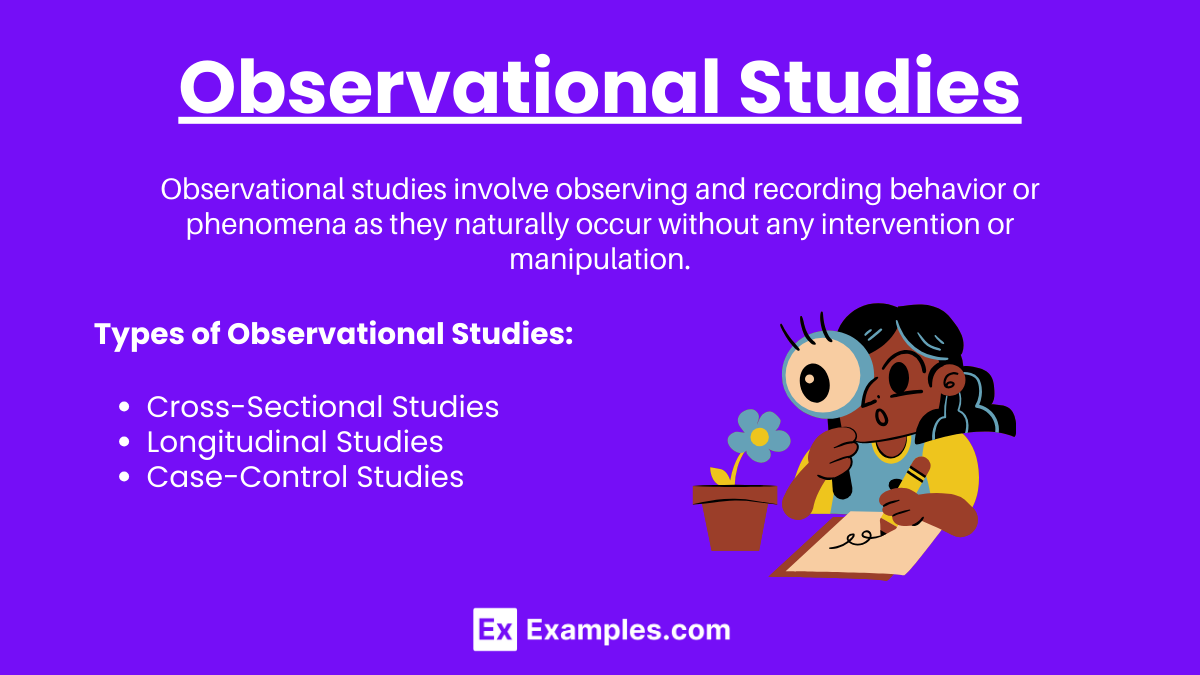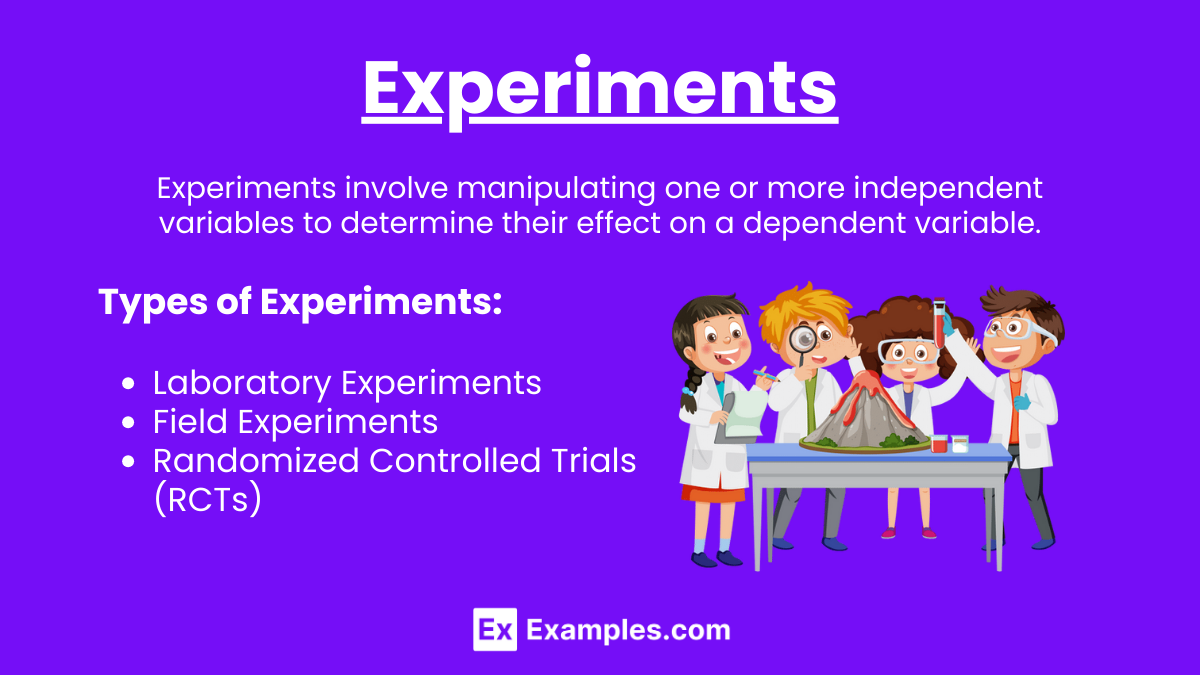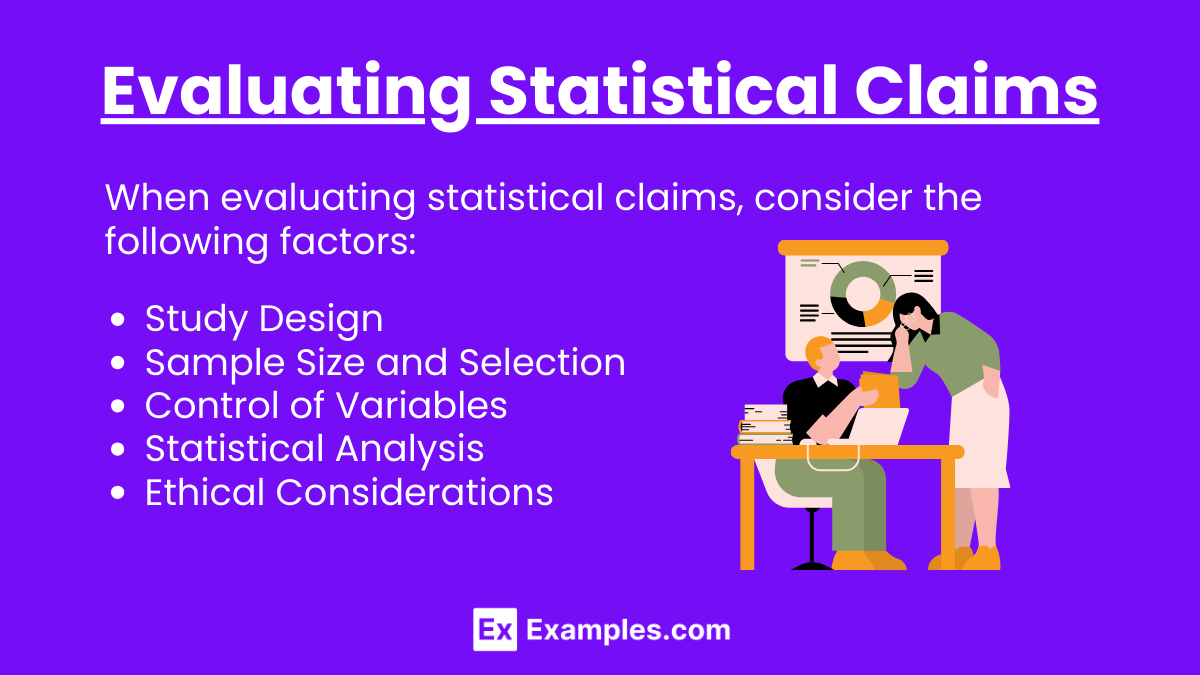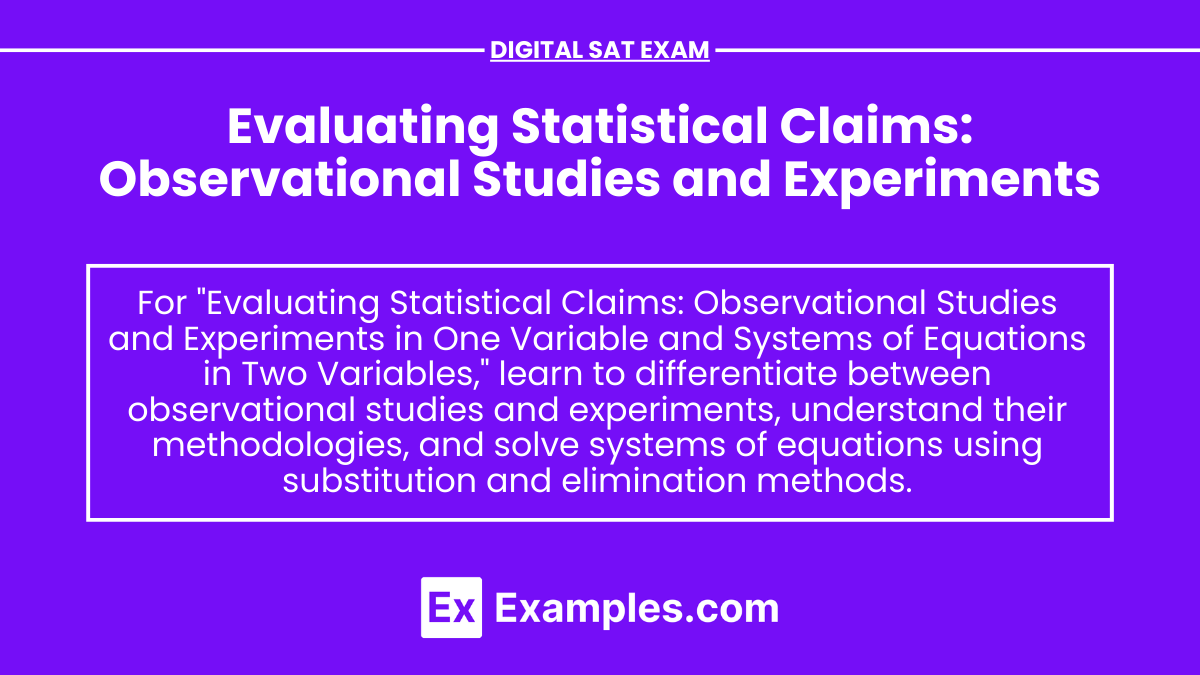Understanding how to evaluate statistical claims is essential for performing well on the Digital SAT Exam. This topic involves distinguishing between observational studies and experiments, two primary methods used to gather data and draw conclusions in statistics. Observational studies involve collecting data without interfering with the subjects, while experiments involve manipulating one variable to determine its effect on another variable. Both methods have their own strengths and limitations, and it’s crucial to understand these differences to critically assess the validity of statistical claims.
Learning Objectives
In this section, you will learn to differentiate between observational studies and experiments, understand their respective methodologies, and evaluate the strengths and weaknesses of each approach. You will also learn to identify potential biases and limitations in statistical claims derived from these methods. By the end of this section, you will be able to critically analyze statistical claims on the Digital SAT Exam and in real-world contexts.
Observational Studies

Observational studies involve observing and recording behavior or phenomena as they naturally occur without any intervention or manipulation. These studies are useful for identifying correlations and patterns but cannot establish causation due to the lack of control over variables.
Types of Observational Studies:
- Cross-Sectional Studies: Collect data at a single point in time from a sample that represents a larger population.
- Longitudinal Studies: Collect data from the same subjects repeatedly over a period of time to observe changes and trends.
- Case-Control Studies: Compare individuals with a specific condition (cases) to those without the condition (controls) to identify factors that might contribute to the condition.
Strengths:
- Can be conducted in natural settings.
- Useful for studying phenomena that cannot be ethically or practically manipulated.
Limitations:
- Cannot establish causation, only correlation.
- Prone to confounding variables that can affect the results.
Experiments

Experiments involve manipulating one or more independent variables to determine their effect on a dependent variable. By controlling the experimental conditions, researchers can establish cause-and-effect relationships.
Types of Experiments:
- Laboratory Experiments: Conducted in a controlled environment where variables can be precisely manipulated.
- Field Experiments: Conducted in natural settings but with some level of control and manipulation.
- Randomized Controlled Trials (RCTs): Participants are randomly assigned to experimental and control groups to eliminate bias.
Strengths:
- Can establish causation through controlled manipulation of variables.
- Randomization reduces bias and increases the reliability of results.
Limitations:
- May lack ecological validity if conducted in artificial settings.
- Ethical and practical constraints may limit the feasibility of certain experiments.
Evaluating Statistical Claims

When evaluating statistical claims, consider the following factors:
- Study Design: Was the study observational or experimental? Does the design align with the conclusions drawn?
- Sample Size and Selection: Was the sample size adequate and representative of the population?
- Control of Variables: Were confounding variables controlled in experiments? Were there any biases in observational studies?
- Statistical Analysis: Were appropriate statistical methods used to analyze the data? Were the results statistically significant?
- Ethical Considerations: Were ethical guidelines followed in the study?
Examples of Evaluating Statistical Claims
Example 1:
Observational Study
A study finds that people who drink coffee regularly have a lower risk of developing heart disease. This is an observational study because it involves observing the behavior (coffee consumption) and health outcomes without manipulating any variables.
Evaluation:
- Type of Study: Observational
- Strengths: Can identify potential correlations.
- Limitations: Cannot establish causation; other factors like diet and exercise might influence the results.
Example 2:
Experiment
Researchers conduct an experiment where one group of participants takes a new drug and another group takes a placebo to determine the drug’s effectiveness in reducing symptoms of depression.
Evaluation:
- Type of Study: Randomized Controlled Trial (Experiment)
- Strengths: Can establish causation; randomization reduces bias.
- Limitations: May lack ecological validity if not conducted in real-world settings.
Example 3:
Cross-Sectional Study
A cross-sectional study surveys a large sample of high school students to determine the prevalence of vaping and its association with academic performance.
Evaluation:
- Type of Study: Cross-Sectional (Observational)
- Strengths: Can identify patterns and correlations at a single point in time.
- Limitations: Cannot determine causation; temporal relationships between vaping and academic performance are unclear.
Example 4:
Longitudinal Study
A longitudinal study follows a cohort of children from birth to adulthood to examine the impact of early childhood nutrition on cognitive development.
Evaluation:
- Type of Study: Longitudinal (Observational)
- Strengths: Can observe changes over time and identify long-term trends.
- Limitations: Cannot establish causation; potential for confounding variables over the study period.
Example 5:
Field Experiment
A field experiment assesses the impact of a new teaching method on student performance by implementing the method in several classrooms and comparing the results to traditional teaching methods.
Evaluation:
- Type of Study: Field Experiment
- Strengths: Can establish causation in natural settings.
- Limitations: May be influenced by external variables not controlled in the experiment.
Practice Questions
Question 1
A study finds that individuals who meditate regularly have lower stress levels compared to those who do not. What type of study is this?
A) Randomized Controlled Trial
B) Cross-Sectional Study
C) Longitudinal Study
D) Case-Control Study
Answer: B
Explanation: The study compares stress levels at a single point in time between individuals who meditate and those who do not, making it a cross-sectional study.
Question 2
Researchers want to determine if a new diet plan leads to weight loss. They randomly assign participants to either follow the new diet or continue with their usual eating habits. What type of study design is being used?
A) Observational Study
B) Longitudinal Study
C) Randomized Controlled Trial
D) Case-Control Study
Answer: C
Explanation: The study involves randomly assigning participants to different groups and manipulating the variable (diet plan), making it a randomized controlled trial.
Question 3
Which of the following is a limitation of observational studies?
A) They can establish causation.
B) They are prone to confounding variables.
C) They require randomization.
D) They are conducted in controlled environments.
Answer: B
Explanation: Observational studies cannot control for all variables, leading to potential confounding variables that can affect the results and make it difficult to establish causation.


